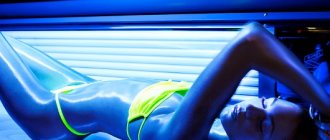Foot skin care is an important and necessary part of a regular self-care routine, which many often forget about or do not pay due attention to. Meanwhile, it is our legs that help us move every day, bearing for hours the heavy load from walking and running and the weight of our body. Improper or insufficient foot care can lead to the formation of calluses, corns, cracked heels and ingrown toenails. Many women remember the need for a pedicure in the summer, when it’s time to change into open shoes and sandals or prepare for the beach season, when you need to take care of your feet all year round. However, everyone needs to know how to care for the skin of their legs - this not only helps for aesthetically attractive legs, but also prevents many unpleasant and painful conditions.
Foot care usually takes much less time than facials and manicures, and a pedicure every 2-3 weeks is usually enough to keep your feet in good condition. Many salons are ready to provide their pedicure services for a reasonable fee for those who are not ready to spend their free time and buy care products for a home pedicure. For those who are not ready to resort to the help of specialists and are interested in how to care for their feet at home, there are tips and rules for caring for the skin and nails of the feet.
Causes of rough skin on feet
Rough and dry skin on the heels is in most cases a cosmetic problem that develops as a result of poor foot care or wearing poor-quality tight shoes. Pathological conditions develop in the following diseases:
- diabetes mellitus;
- lack of vitamins;
- dermatoses of an allergic nature;
- fungal infections of the skin of the feet;
- psoriasis;
- hormonal disorders in women during menopause.
To achieve successful results from foot care, it is necessary to eliminate the likelihood of painful skin conditions. By contacting a dermatologist, a histological examination of the rough skin will be performed.
If a pathology is detected, the doctor will identify the cause and prescribe treatment. While adhering to the doctor’s recommendations, you also need to take careful care of your feet. Without appropriate therapy, rough skin due to diseases will reappear.
If ugly skin on your heels is the result of a careless attitude towards yourself, cleansing procedures will quickly give a good effect. To do this, it is not necessary to go to specialized salons; careful care at home is enough.
Proper cleansing of heels at home - instructions
Taking care of your heels in a beauty salon is a pleasant experience. But not everyone has the means, time, or desire to go to salons.
And it’s much easier to take care of your heels at home. Especially if you know exactly how.
First, steam the legs in the bath.
It is recommended not to neglect this stage of care, because it is the baths that help quickly soften the skin for easy removal of dead cells, nourish and moisturize the heels.
And if you also give a foot massage before the bath, the result will be even more surprising, pleasant and long-lasting.
The massage can be replaced with regular walking on a hard massage mat or with your feet moving peas, balls, etc.
Method number 1: hydrogen peroxide
Hydrogen peroxide is an affordable, inexpensive product that can be sold at any pharmacy without a doctor's prescription. It is mainly used to disinfect damaged skin. Antiseptic and exfoliating properties in combination give excellent results when cleaning the skin of the feet.
For a cosmetic procedure, it is necessary to prepare a special solution, which includes 5 tbsp. spoons of 3% hydrogen peroxide and 2 liters of hot water. For ease of use, you can choose rubbing or foot baths.
In any case, before the procedure, it is advisable to steam dry skin on the heels to achieve maximum effect. For rubbing, you can take a cotton pad or cotton cloth and, moisten it in a weak solution of hydrogen peroxide, clean the entire skin of the feet on both legs.
For baths with peroxide, you need to pour the resulting mixture into a clean bowl and place your feet there for 10 minutes. At the end, the skin of the feet is cleaned with a pumice stone or a file, and then lubricated with a rich nourishing cream.
The number of procedures will depend on the condition of the feet; usually the full course can take up to one and a half months. Once every 3 days is the optimal frequency to achieve good results; more intensive use will only dry out the skin.
It is recommended to carry out foot baths in the evening before bed, so that the skin of the feet is nourished and softened at rest for several hours.
Having achieved smooth skin on the feet, the ideal condition must be maintained regularly. The skin of the feet is subject to constant pressure and friction while walking under the weight of its own weight, so it is more vulnerable than other areas of the body.
Hydrogen peroxide will become an indispensable assistant in the fight for healthy heels.
Method number 2: Epsom salt
Epsom salts are great for removing rough skin on your heels. Bitter salt can be purchased at a pharmacy; its other name is magnesium sulfate. A unique chemical compound of sulfur and magnesium gives the skin a radiant appearance and nails a strong structure.
Epsom salt, interacting with the skin of the feet, cleanses, softens and has an antibacterial effect.
In addition to its cosmetic benefits, magnesium sulfate relieves swelling and fatigue after a long day on your feet. Sulfur with magnesium is effectively used to combat unpleasant foot odor.
Cleansing treatments for dry heels are carried out in the form of warm evening baths or Epsom salt crystals are used as a scrub. A handful of bitter salt is rubbed into the surface of rough heels for several minutes into pre-steamed skin. After the procedure, the skin is washed with warm water and generously lubricated with nourishing cream.
Cleaning rough heels with a salt solution at home is easy and pleasant. Algorithm of actions:
- Add a pinch of Epsom salt to hot, clean water and stir until completely dissolved.
- Place your feet in the solution and steam your heels for half an hour, keeping the mixture hot.
- After finishing, remove the thickened skin mechanically with a pumice stone or brush.
- We wash our feet with fresh water and dry them with a clean towel.
- Lubricate the skin of the feet with cream. To enhance the nutritional effect, you can add 3 drops of an oil solution of vitamins A and E to the cream.
In just a few days, a good result will be noticeable. The course is completed when the desired result is achieved, on average it lasts from 1 to 2 months.
Method No. 3: onions
How to clean rough skin using onions? There are onions in every home. Not everyone knows that it can be used not only for cooking, but also for cosmetic procedures.
Fresh onions are a source of calcium, fluoride, zinc, magnesium, as well as essential oils. The high content of these elements makes ordinary onions a bactericidal agent that improves the condition of the skin epithelium and has a cleansing effect.
When applied topically, onion regulates the activity of sweat glands and eliminates unpleasant odor.
To remove rough and dry skin on the heels, cut a large onion in half and place it on top. Then, on top of the onion, you can wrap your feet with cling film and put on socks made from natural materials.
It is recommended to keep the compress for 90 minutes, while your legs should be in a lowered state. After the procedure, mechanical cleaning and nourishing of the skin with cream is carried out.
Another method is to use chopped onions. The mushy mass is applied to gauze folded in several layers. The bandage is applied to the heels; the time of contact with the bow should be no more than 30 minutes.
Onions, as a means to remove rough skin, are suitable for everyone. Try not to overdo it and perform manipulations no more than once every 3 days.
Daily use can lead to inflammatory processes as a result of irritation of the sweat glands. For the fastest effect, try to choose shoes made from natural materials that can allow air to pass through.
Method #4: Baking Soda
Sodium bicarbonate has long been known for its unique skin cleansing properties. The softening effect will prepare rough skin to remove unwanted growths.
Antiseptic properties will remove pathogenic bacteria and fungi, which cause not only changes in the skin, but also an unpleasant odor. The anti-inflammatory effect will promote healing and regeneration of the skin of the feet.
How to properly clean your heels from rough skin using baking soda at home? There are several folk recipes:
- Dry mixture of soda and soap. A small amount of soap should be grated on a coarse grater. Add a teaspoon of soda to the crushed soap and apply to the skin in the heel area. Wrap in film, put on socks and leave the compress for 20 minutes, then clean your feet with pumice and lubricate with nourishing cream.
- Soda foot baths. Add a little soda to hot water and take baths for 15 minutes until the solution remains warm. After steaming, wash your feet with clean water and mechanically remove the rough skin on the heels. After softening with cream, be sure to wear warm socks.
- Soda with milk. An excellent effect can be achieved by using milk instead of water. The use of dairy products to nourish and soften the skin has been known since the ancient times of Egyptian beauties. Foot baths with milk follow the same pattern.
- Olive oil and soda: mix 15 grams of soda with 5 ml of olive oil and rub into rough skin. The abrasive properties of soda in dry form act like a scrub, and the oil softens the skin and makes the cleansing process more gentle.
Take note!
- Sea wolf (nourishes, moisturizes, restores).
- Bepanten (softens, heals).
- Ointment with calendula (heals, softens, tightens cracks).
- Salicylic ointment (heals).
- Balsamed (moisturizes, nourishes, protects).
- Radevit (stimulates skin restoration, removes inflammation).
- Lamisil (against infections and fungi).
- BioAstin (against fungus and infections).
- Zazhivin (from cracks).
- First aid (heals, softens).
- And etc.
Method number 5: natural honey
How to get rid of rough skin on your heels using honey. Honey is a natural antiseptic that combines an emollient and nourishing cosmetic to improve the condition of the skin of the face and body.
When cleansing the skin of the feet, to speed up the effect, use not pure honey, but a mixture of it with viburnum or prunes. When exposed to honey, rough keratinized layers noticeably peel off, releasing clean epithelium and eliminating inflammatory processes from the skin. Viburnum is a real storehouse of microelements that stimulate the growth of young layers of epithelial tissue.
How to easily and quickly remove rough skin from your heels using a compress:
- Crush 50 g of viburnum berries, after removing the seeds, and mix with half a glass of honey;
- Before applying, the paste should be heated in a water bath until warm;
- the mixture is applied to a bandage or natural fabric and applied to the heels;
- To obtain a compress effect, the legs are wrapped in cellophane and wrapped in a blanket for 30 minutes.
In a similar way, it is useful to use prunes instead of viburnum. A mixture of honey and prunes breaks down the thick dead skin layers of damaged skin, and acts as a chemical peel to remove rough skin on the heels. The skin begins to come off in large pieces, leaving the smooth surface of the feet free.
The advantage of this method is absolute safety and painlessness. Compresses with honey can be applied daily without harm to the feet. The duration of the course is extended until the desired effect is achieved.
The most popular recipes for smooth heels at home:
- Steam your feet in the bath for 15 minutes, wipe, massage with cream, treat with a soft grater “dry”. Next, take a warm shower, wipe dry again and apply the pre-prepared mixture: 1 tbsp starch, 1 tbsp lemon juice, 1 raw yolk. Now we wrap the legs with film for a couple of hours, or better yet, overnight. All you have to do is remove the exfoliated skin with a light file, rinse the legs in the shower and, after drying, lubricate them with cream.
- We wrap the feet in slices of fresh zucchini and fix them with film for 2 hours. Next, rinse the legs, dry them, file them, and apply cream.
- Heat olive oil (about 100 ml) in a water bath, add a piece of beeswax, then 1 tsp each of sea buckthorn oil and glycerin. Apply the warm mixture to steamed and dried feet, leave overnight under cotton socks. Store the mixture in the refrigerator (you can spread it cold).
- Cook oatmeal that is not too thick without sugar and salt, cool and apply it lukewarm to your feet. We fix it with film, put socks on top, after an hour we wash it off, dry our feet and lubricate it with a rich cream.
- Mix honey and olive oil in half, apply to the feet, fix with film, wash off after 2 hours, treat the feet with a file, then follow the usual procedure - shower, towel, cream.
- We brew strong green tea, strain and steam the legs in a bath with this decoction. Next, apply the tea leaves (immediately after the bath) - in a film and around the feet for a couple of hours. Next, wash your feet, dry, and apply cream.
- Mix oatmeal with milk (5 tbsp - 1 handful) and crushed aloe leaves. Apply the mixture to the feet, fix with film for 2-3 hours. Next, we process it with a file, rinse it, dry it and grease it with rich cream.
Prevention of corns, calluses and rough skin of the feet
Having done a tremendous amount of work, you can achieve an amazing result. Smooth and healthy feet will delight and delight, but many people face the problem of rough skin appearing again and again. Having achieved the desired result, it is necessary to maintain the effect with preventive procedures.
Daily foot care allows you not to think about how to clean your heels of rough skin again. Mandatory evening dress includes:
- foot baths with medicinal herbs and essential oils;
- regular use of scrubs and fine-grained foot files;
- daily use of foot creams with vitamins A and E;
- using a personal towel to dry your feet.
Increased demands must be placed on shoes. Ideally, it will be made of natural materials and an anatomically correct last. In this case, the feet will be provided with air circulation, and the orthopedic padding will ensure proper distribution of the load on the foot when walking, eliminating the appearance of corns.
It should be added that daily work in caring for your feet will be rewarded with admiring glances from others when they see your feet.
Tags: Epsom salts, baths, honey, callus, hydrogen peroxide, baking soda, heel, onions, salt baths, feet, soles, care, ankle About the author: Andrey Stepanovich
« Previous entry
Age-related changes
Aging affects the entire body, but it is a natural process. Over time, muscle tone changes, the level of collagen that our skin produces decreases, skin elasticity deteriorates, and problems with blood supply appear. In old age, the skin does not retain moisture well, making it drier and more prone to flaking. As a result, microcracks may appear, which serve as a kind of gateway for infection, including fungal infection. Joints and soft tissues become less mobile. In some cases, hallux valgus even begins to deform on the feet - the appearance of a so-called bunion and deviation of the big toe outward.
Lyudmila Zhilevich chief freelance gerontologist of the Ministry of Health, head of the Republican Gerontological Center (active longevity):
– Older people have certain health problems that are related to physiology. There is an involution of the whole organism; over the years, some organs and systems change. Most often, changes occur in the vascular system, which, among other things, leads to a deterioration in blood supply in the lower extremities, namely in the feet. And this is the reason for decreased muscle strength, slow nail growth and poor wound healing.
Due to age-related changes that occur in the body, the volume and air permeability of the lungs decrease. As a result, gas exchange decreases and the body suffers from a lack of oxygen. And again, the periphery is at risk, which means the legs and feet.
Metabolism slows down. Excess weight appears, which creates additional stress on the musculoskeletal system. Deformation of the spine leads to a significant increase in the load on the joints, including the joints of the feet. Injuries received at a young age also make themselves felt.
A separate point is pathological changes in the body provoked by existing diseases. The most dangerous processes are those associated with diabetes. Metabolic disorders, vascular fragility, decreased oxygen content in the blood, decreased collagen production - all these processes accelerate exponentially.
Lyudmila Zhilevich chief freelance gerontologist of the Ministry of Health, head of the Republican Gerontological Center (active longevity):
– The immune system, the protective properties of which decrease with age, weakens even more with diabetes. Regeneration processes slow down, that is, the natural renewal of skin cells. Because of this, cracks and abrasions that may appear on the foot do not heal for a long time. In these places there is a very high risk of contracting an infection and, as a result, the appearance of non-healing ulcers and even the development of gangrene.










